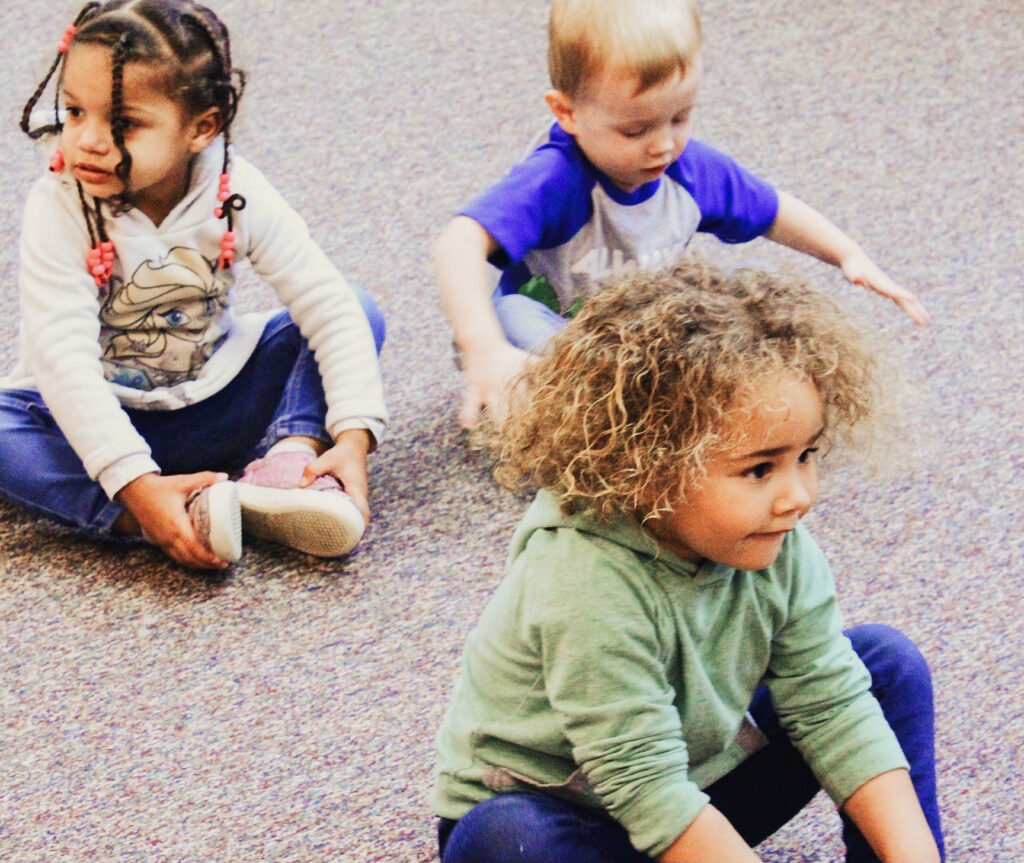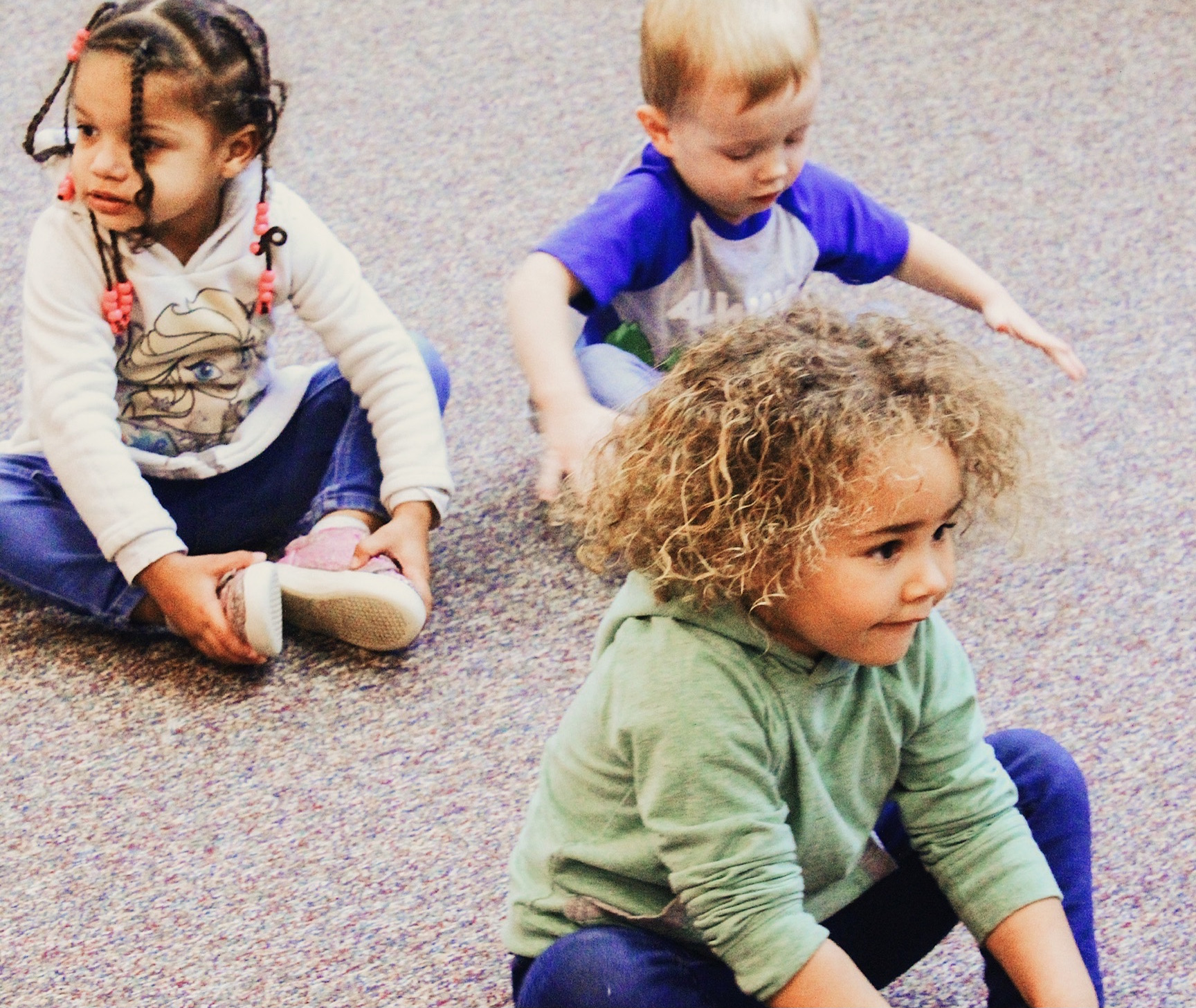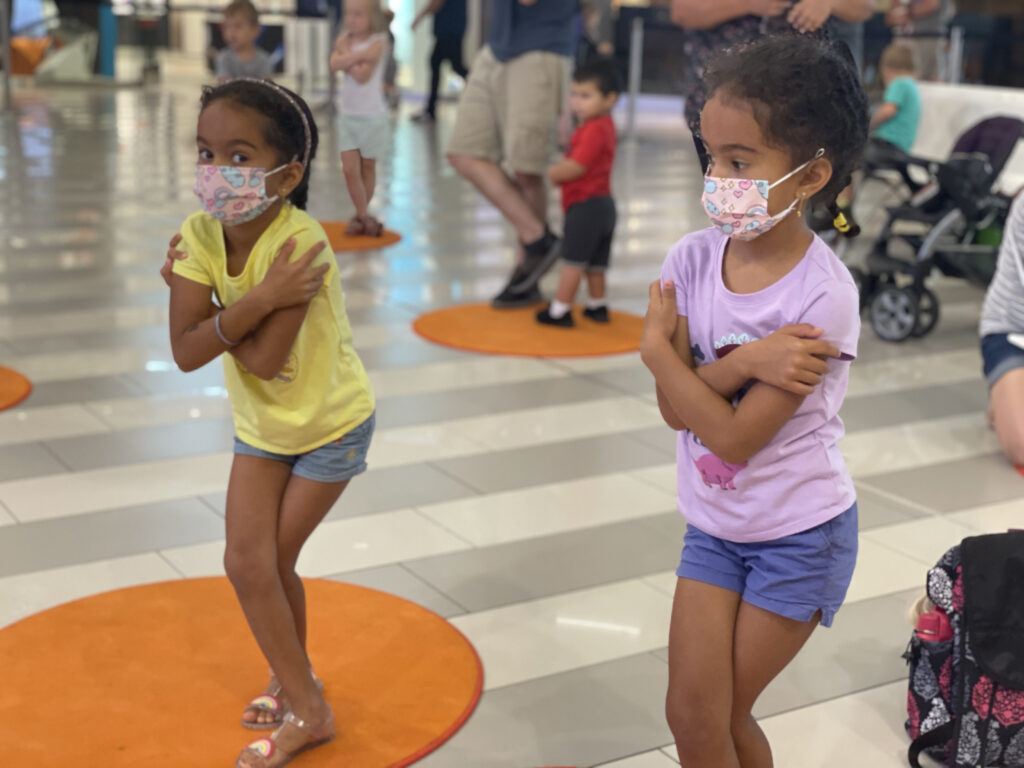Playing with BREATHE-MOVE-REST
Children wander around the room, coming in and out of circle time, as we finish a MoveMindfully lesson in a one year old room at a St. Paul Preschool/Daycare. This scene might look pretty chaotic to an outside observer. Some children listen carefully, following along on the brightly colored carpet. Others toddle about. A small and quiet eighteen month old little girl is watching our lesson from the periphery of the circle.
As we get on our backs to try “Rock, Rock” (lying on back and hugging knees in while gently rocking side to side), she takes her baby doll and carefully places her on her back and rocks her side to side. I catch the teachers’ eyes and we smile knowing that she has been watching us the whole time, taking in these important lessons for self-soothing. For what feels like the thousandth time, we say how fun it is to see this important work in action.
Adorable as this is, what is even more important is how it illustrates the power of play. Stuart Brown outlines the importance of play in this TED Talk. What is so exciting about play is that it allows us to master important life skills that make us more resilient. Children use their creativity to develop imagination, fine and gross motor skills, mental, and emotional strength during play.
When our young friend is rocking her baby during play, we see her using imagination and building empathy. This is why our MoveMindfully Early Childhood Card Deck fits so well in Pre-K and ECSE environments. Simple visuals with age appropriate (and Playful!) language introduce regulating breathing and movement strategies to help children find ways to help them listen, learn and make good choices in Early Ed environments.
I have spent more than a decade teaching BREATHE-MOVE-REST strategies to our youngest learners. When I started teaching in preschools and childcare centers back in 2009, not many people were teaching breathing and yoga-based movement in Early Education. I quickly found that play-based environments, like preschools and daycares, are the perfect place to introduce breathing and movement for self-soothing/self-regulation.
Early Ed environments have many of these magical moments – where we see young children learn a skill for self-regulation and “practice” it with others. Children who at first glance appear to not be paying attention, take a doll and teach them movements. Or even more delightful – they help another child or even an adult! By “teaching” others, they are truly mastering these important skills.
Let’s look at how our play teaches these strategies:
Building Imagination
Pretending to be in a cocoon (Child’s) and growing into a Butterfly is a lot of fun! We can imagine what color our butterfly is and choose if we have antennae. We are also learning regulating-movement that can help us self-soothe and calm before rest time.

Social Awareness
Is one of our friends struggling today? Having difficulty staying in circle time or feeling frustrated? We can acknowledge that we all have tough days sometimes and brainstorm our next move together- maybe Eagle so we can give ourselves a big hug! Check in with each other after Eagle. Who feels better? Who feels more ready for the rest of our day?
Time to Rest
Rest is a great time to tell stories, play music, and use our imaginations. Whatever Rest card we pick to use, we can place stuffed animals on our bellies and gently rock them to sleep with our breath. We can remind our friends to notice how they feel when they slow down their breath. We can point out, “Your stuffed animal looks so peaceful and calm- do you feel peaceful and calm?” Oftentimes we witness more magic here – when our young friends put their stuffed animals away after rest time, we see them hug and kiss them gently.
MoveMindfully offers Develop Approved training for Early Childhood Educators. Reach out to info@move-mindfully.com to schedule your training today!
Do you use yoga based movement in an Early Childhood setting? What has worked well? Leave a comment!
Written by, Chrissy Mignogna


